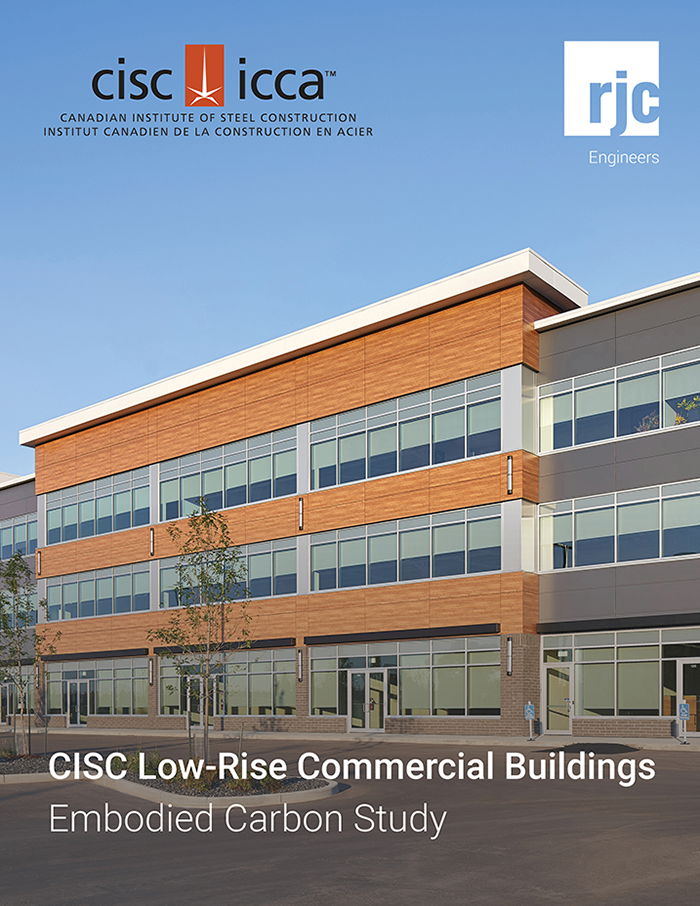CISC Low-Rise Commercial Buildings - Embodied Carbon Study

Canadian Insitute of Steel Construction | July 2025
Dominic Mattman, MASc, P.Eng., LEED AP | Technical Resources Development Leader
Alex Hartloper, PhD, EIT | Engineering Software Programmer
Ghazal Sonboli, BASc, MBSc,EIT,CPHD | Building Envelope and Performance Designer
As requested, RJC Engineers (RJC) has completed a study on the embodied carbon of typical low-rise steel structures in Canada. To develop this report RJC’s work included: computing and reporting structural quantities for five representative projects and nonstructural quantities for four representative projects in Canada; conducting and reporting the results of whole-building life-cycle assessments (wbLCA) for the five projects; and discussing key topics of interest related to quantities and embodied carbon.
This study found that low-rise steel buildings (i.e., 1-6 storeys) should be expected to satisfy current municipal embodied carbon limits in Canada if a reasonable effort is made to source low-carbon materials. The average embodied carbon intensity was around 301 kgCO2e/m2 (based on quantities from contract documents, normalized by the built floor area) for four projects that were constructed in Canada. In the lowest carbon scenario, alternative low-carbon steel materials could reduce the total embodied carbon by approximately 15% - this reduction may allow typical low-rise steel buildings to meet the strictest embodied carbon limits that currently exist in Canada. On the other hand, it is unlikely that buildings utilizing steel solely sourced from basic oxygen furnaces will meet embodied carbon limits.
Of the total embodied carbon, approximately 90% was “upfront” embodied carbon (i.e., due to wbLCA phases A1-A5). The average nonstructural (i.e., cladding and finishings) contribution to the total embodied carbon was around 25%. The average contribution of steel to structural embodied carbon was around 50%; the average contribution of deep foundations to structural embodied carbon was around 20% while the same contribution for shallow foundations was around 10%. Of the structural steel elements, the highest contributors to structural embodied carbon were consistently hot-rolled shapes (nearly 20% of baseline structural on average) and cold-formed steel floor/roof decks (around 10% of baseline structural on average). It is expected that the NBCC 2020 seismic provisions may lead to an increase of around 7% in the buildings evaluated in this study.